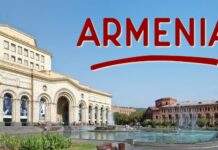WHAT IS ISLAMIC HISTORY & CULTURE ? CONTENTS are; Pre-Islamic Near East: An Overview, The Dawn of Islam: The Prophetic Age (570-632), The Pious Caliphate (632-660), Political System of Islam under the Prophet (PBUH) and the Pious Caliphate, Institutional Development of the Muslim Civilization: The Early Phase (622-660), and Part II …
CONTENTS
Table of Contents
(WHAT IS ISLAMIC HISTORY & CULTURE ?ACCORDING TO FPSC)
Part –I (Marks 50)
I. Pre-Islamic Near East: An Overview
- Political, Social, Cultural, Religious and Economic Conditions in the Near East countries
- Arabia before the beginning of Islam
II. The Dawn of Islam: The Prophetic Age (570-632)
- The Life story of the Prophet Muhammad (PBUH):
- A Chronology of the Major Occasions in his Life
- Prophet Muhammad (PBUH) as a Motivator (Daa’i), Major purposes of his crucial
- Prophet Muhammad (PBUH) as a Military Leader/Strategist
- Prophet Muhammad (PBUH) as a Political Leader/Head of the State
III. The Pious Caliphate (632-660)
- Caliph Abu Bakr (632-34): Apostasy Wars and Consolidation of Islam
- Caliph Umar b.Khattab (634-44): Establishment of Administrative System
- Development of the Muslim Empire
- Caliph Uthman b.Affan (644-56): Problems and Issues in the Muslim Community
- Caliph Ali b.Talib (656-660): Rise of FactionalismSurrender of Imam Hasan and Establishment of Umayyad Dynasty (660)
IV. Political System of Islam under the Prophet (PBUH) and the Pious Caliphate
- Nature of Islamic State
- Type of the Government
- Elements of the Islamic State
- Sway of God
- Caliphate or Vicegerency of Man
- Arrangement of Caliph
- Shura or the Consultative Body and its Role
V. Institutional Development of the Muslim Civilization: The Early Phase (622-660)
- Advancement of Law and Judiciary in Early Islam
- Organization and State Conduct
- Resistance in Early Islam
- Instructive System
- Spread of Islam
- Monetary Administration
- Legacy and Culture
VI. The Umayyads in Power (660-749)
- Political History of the Umayyad Dynasty
- Statecraft and Administration under the Umayyads
- Society and the Development of Arabic Literature.
- Social Achievements
Public Administration Part –II (Marks 50)
I. The Abbasids of Baghdad (749-1258)
- The Abbasid Revolution and the Establishment of the Abbasid Dynasty
- Authoritative Structure under the Abbasids
- Improvement of Scientific Knowledge under the Abbasids
- Muslim Philosophy under the Abbasids Social Achievements
II. Spain under the Muslim Rule
- Spain under the standard of the Arabs and Moors (711-1492)
- Political Fragmentation and the Fall of Granada (1492)
- Muslim Contribution in the Realm of Culture, Arts and Architecture
III. The Crusades against Islam
- Significant Encounters and Actors (1092-1228)
- Effect of the Crusades on Muslim-Christian Relations
IV. The Ottoman Empire
- Rise and Fall of the Ottoman Turks (1299-1923)
- State, Society, and Economy under the Ottomans
- Treatment with the Religious Minorities Commitment towards Culture, Arts and Architecture
V. Sufism as an Institution of the Muslim Society
- Inception and Development of Sufism
- Commitment of the Sufis to the Muslim
- CivilizationRelationship of the Sufis with the State and Political Authorities.
- A Critical View of Sufism…………..

























